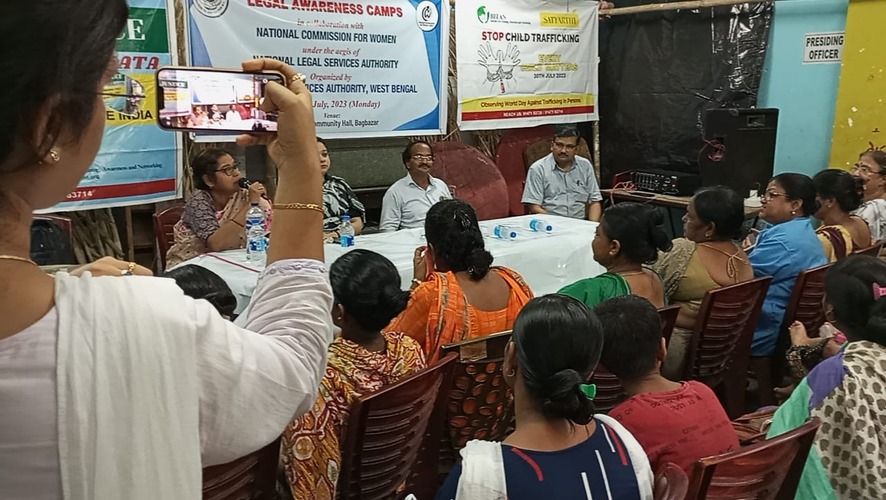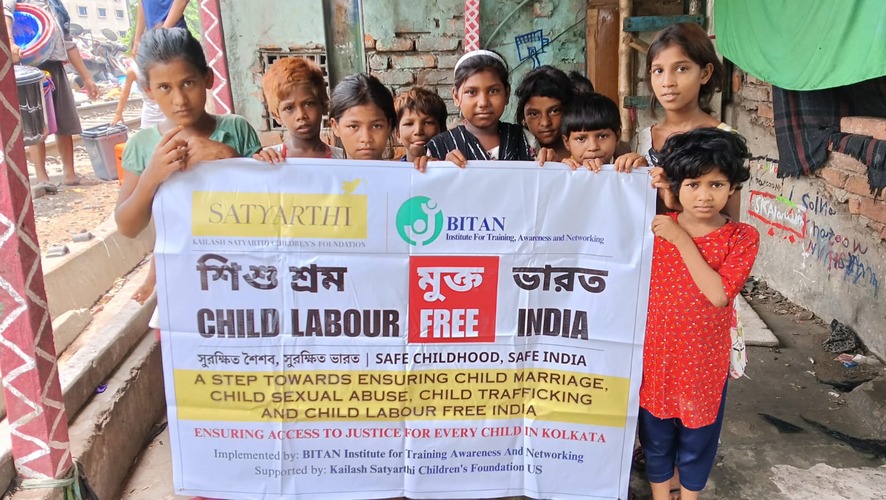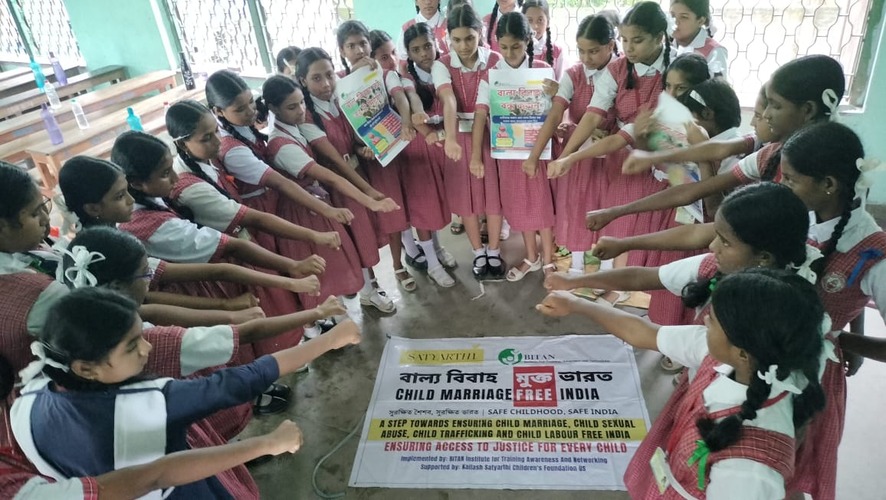Our Projects
CHILD PROTECTION
BITAN Institute for Training Awareness and Networking is dedicated to prevent Child Marriage, Child Trafficking, Child Labour and Child Sexual Abuse. The organization participated and organized Child Marriage Free India Campaign in Kolkata district in West Bengal covering over 50 wards under Kolkata Municipal Corporation and areas under Mahestala and Budge Budge Municipal Corporation under South 24 pgs under the project. We also support governments with policy, legislation and regulatory frameworks that give more children access to social services and justice.
The Campaign Activities included:
June Action Month – BITAN conducted an awareness campaign in different slums of Kolkata to celebrate World Day Against Child Labour on the 12th June. Bitan has identified twelve child labours from the different slums, with counselling supports to the parents of the those identified children and they sent back to school.
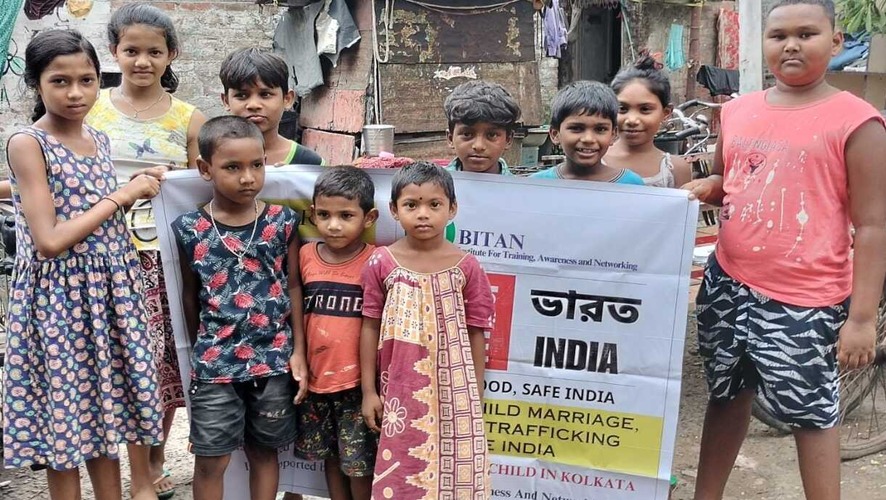
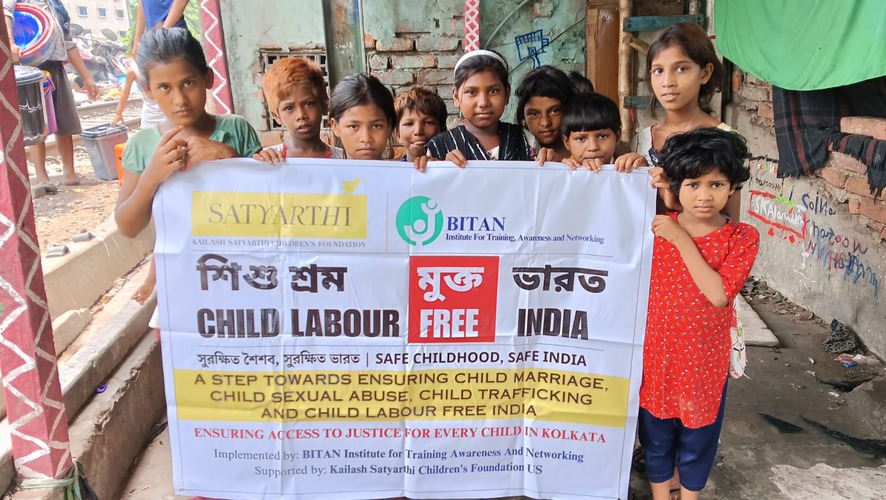
July Action Month – Observation of World Day against Trafficking in Persons celebrated in locality of Kolkata collaboration with Jorbagan Police station along with the Adolescences groups from the community to generate awareness of Human Trafficking.
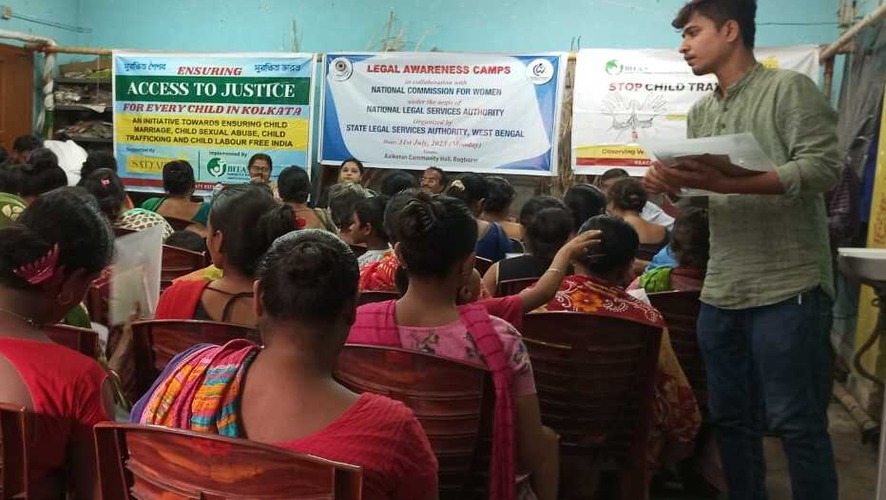
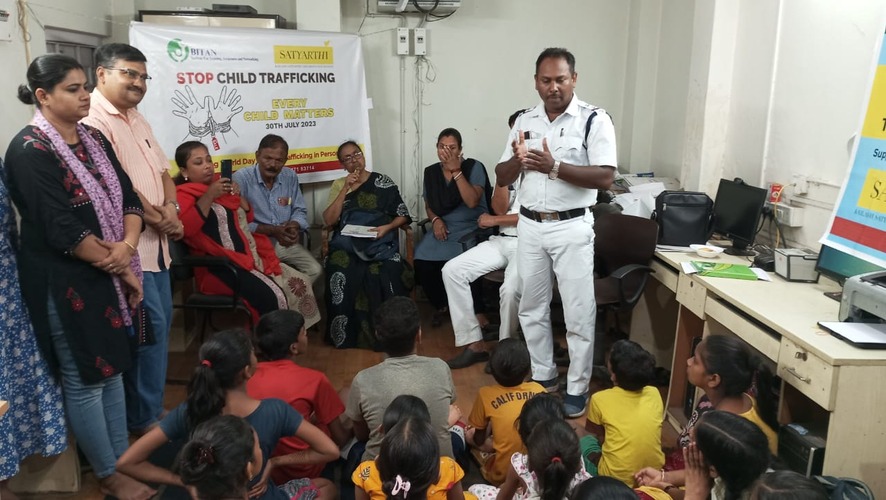
August Action Month –
- Bitan team members celebrated Ralhsha Bandan with the police personnels from Taratala PS, Beniapukur PS, Parnashree PS and Cossipore PS by tying rakhis to increase bonding which can help us for better networking.
- Team members of BITAN have been selected and authorised as POCSO Support Persons by the Directorate of Child Rights and Trafficking, and started to handling POCSO cases and provide necessary support in Collaboration with Child Welfare Committee Kolkata.
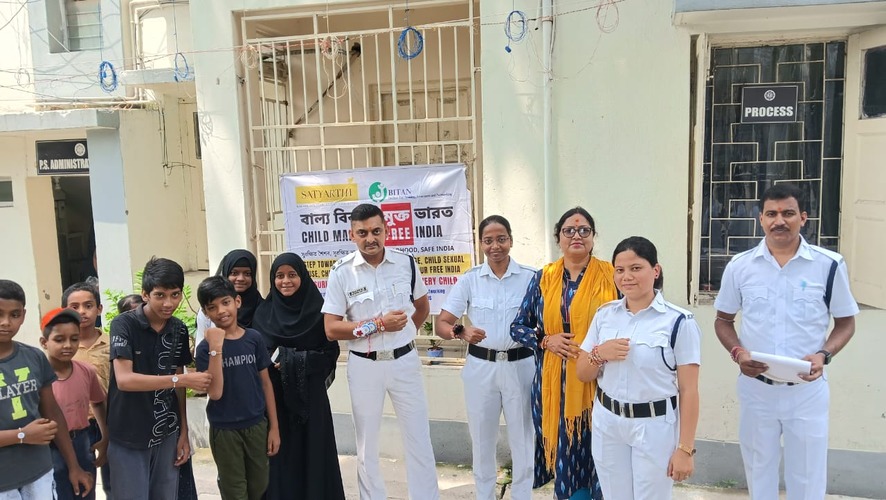
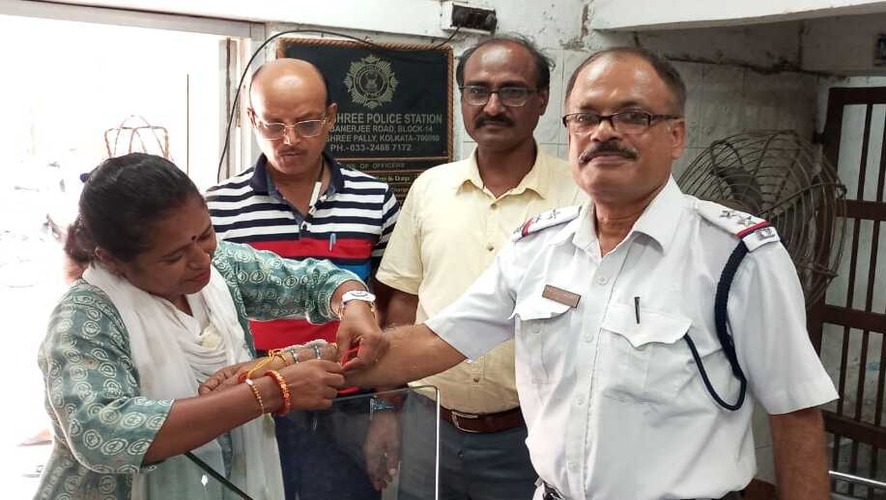
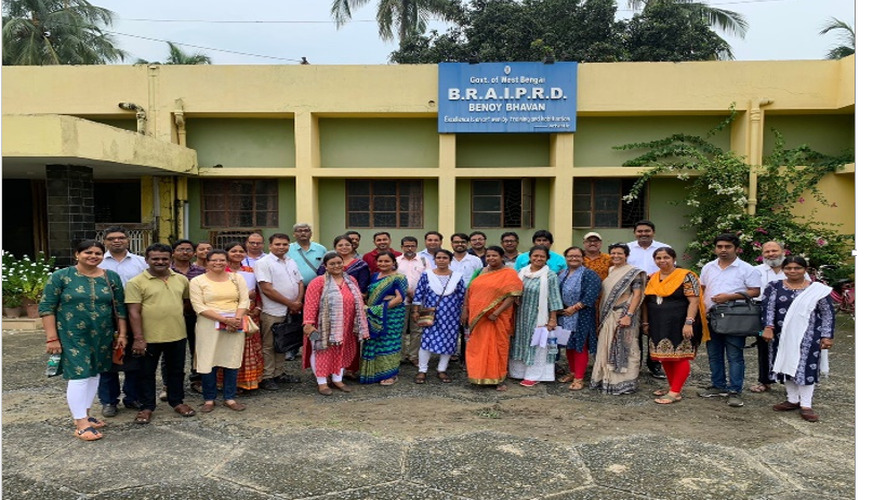
September Action Month –
Awareness and signature campaigns have been organised in different schools, colleges and community areas and also with the members of Self Help Groups to discuss child related issues.
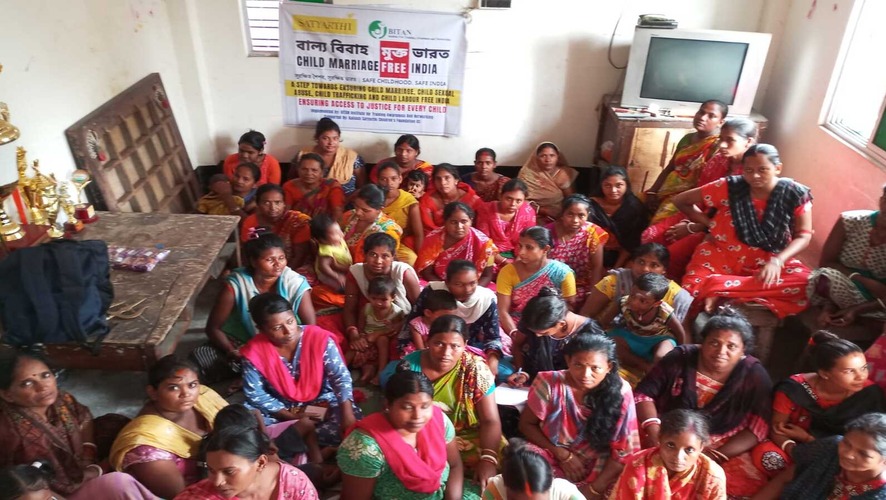
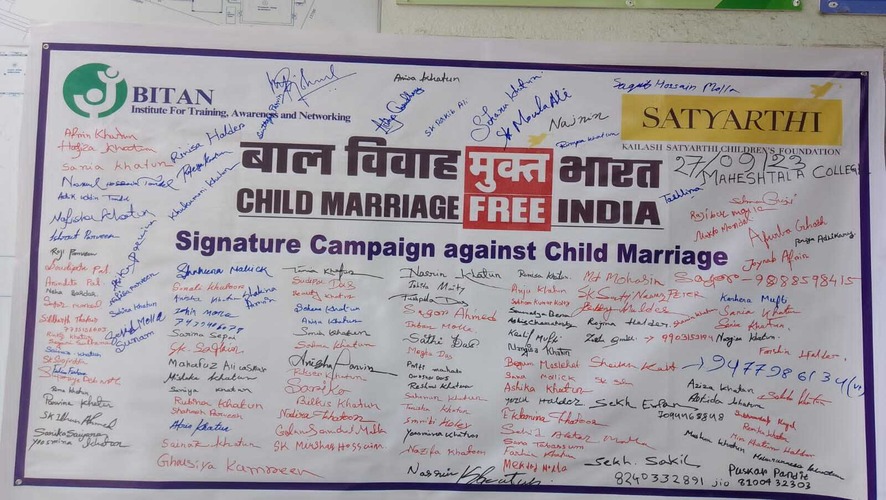
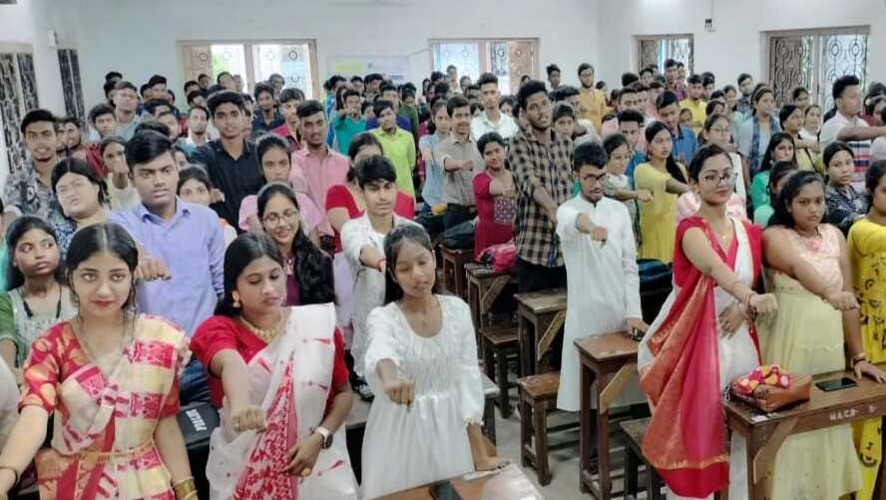
October Action Month –
- Observation of International Girls’ Child Day on 11th October by organising a tram rally for the children from Esplanade to Gariahat in Kolkata in collaboration with other organisations of Kolkata
- Celebrate Debi Pakkhyo to aware children regarding child abuse related issues like child marriage, child sexual abuse etc.
- BITAN organised CHILD MARRIAGE FREE CAMPAINGN on 16th October in 50 slums of Kolkata, different schools and Naya Basti area of Maheshtala Municipality. We reached above 3000 peoples in one day through different activities like lightening candles, mashaal march, road rally with the school childre n, street theatre etc.
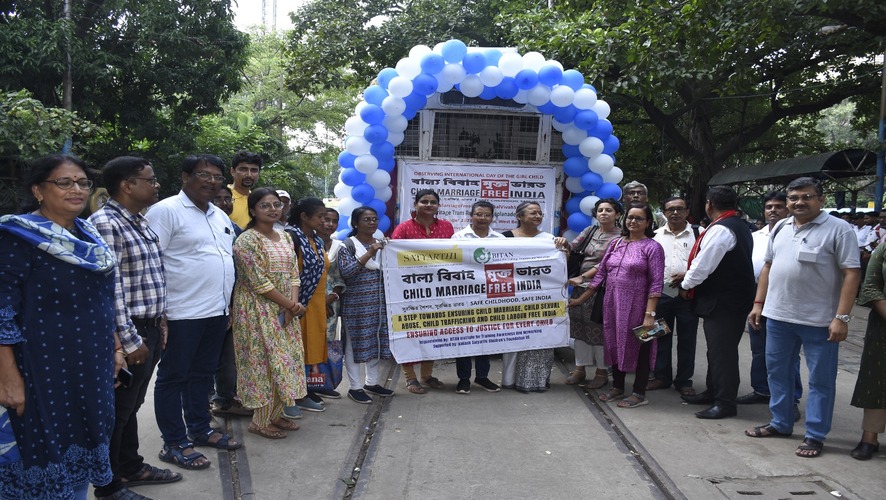
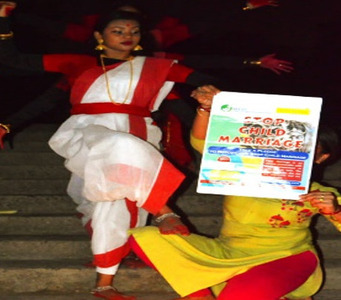
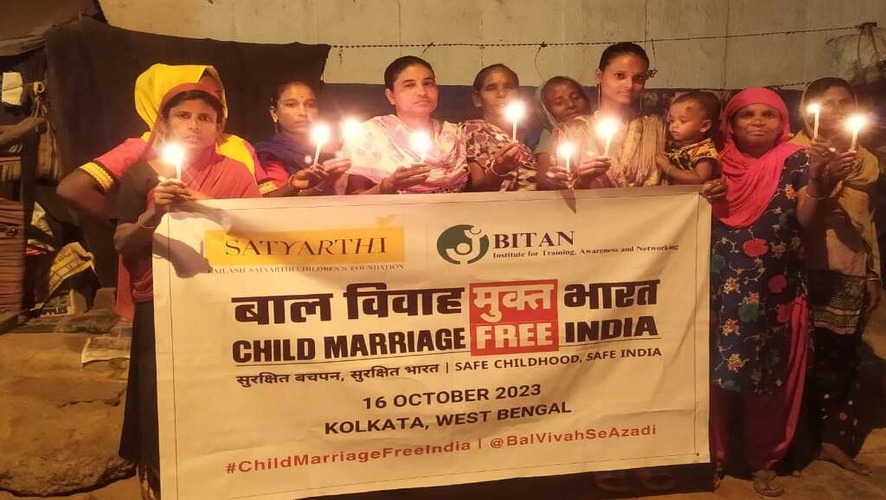
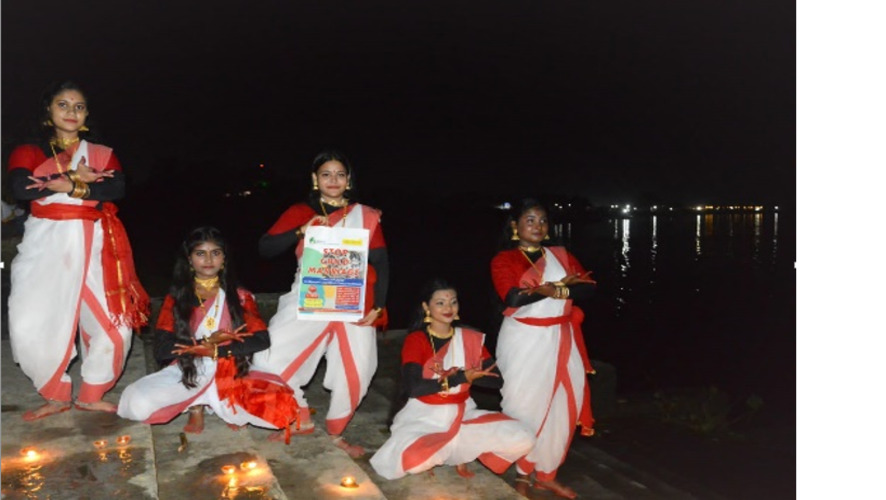
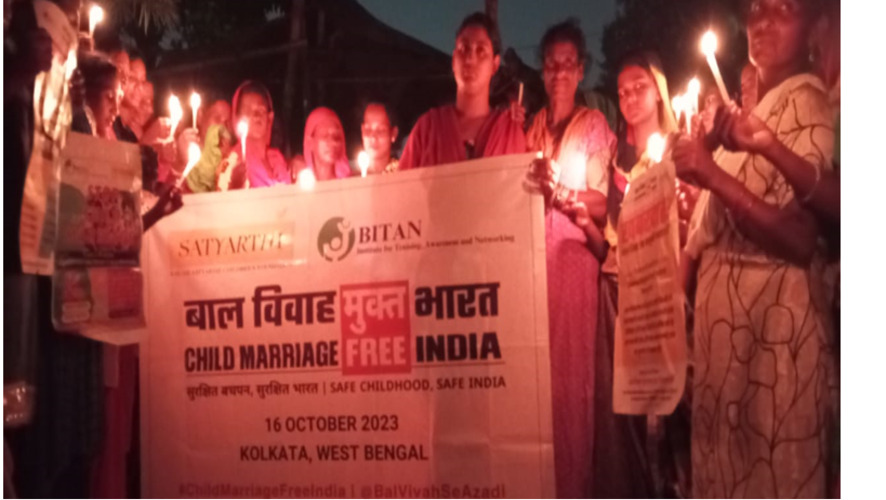
November Action Month –
- Children’s day celebration has been observed in different slums of Kolkata with collaboration with ICDS centres. Awareness sessions, cultural activities have been organised to engage children and aware related to child marriage and child sexual abuse.
- District level convergence meeting have been organised with different govt. stakeholders like District Child Protection Unit (DCPU), District Legal Services Authority (DLSA), District Project Officer (DPO) ICDS, Child Development Project Officer (CDPO), Special Juvenile Police Unit (SJPU) etc.
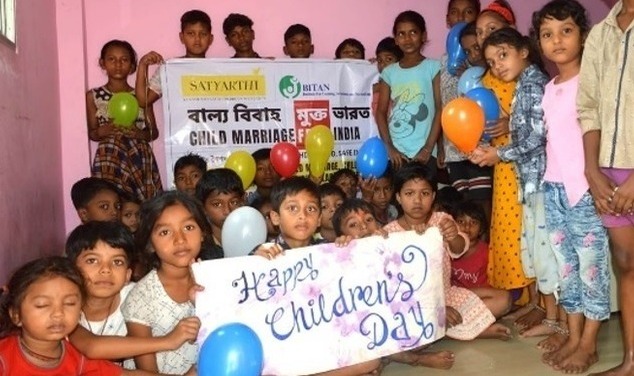
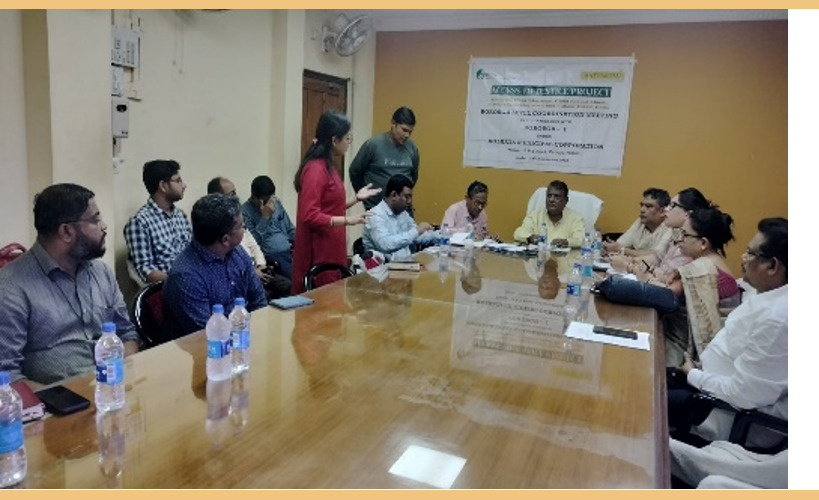
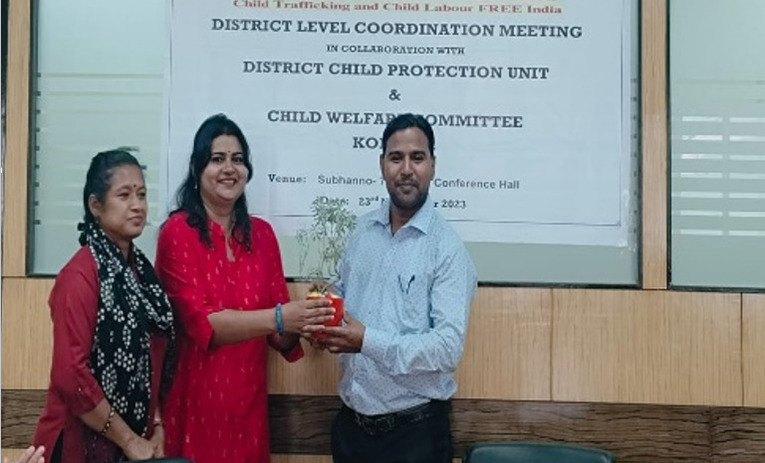
December Action Month –
- With regular visits of our community social workers in slums areas of Kolkata, 8 children have been identified who are below 14 years and working in different sectors like garages, restaurant etc. Identified children were and rescued by Deputy Labour Commissioner of Kolkata with the presence of representative of District Child Protection Unit, Local Police officers by the assistants of BITAN team members.
- Mass awareness sessions and pledge campaigns have been organised in different tourist spots of Kolkata like Eco Park, Victoria Memorial, St. Pauls Cathedral Church and Birla Planetarium. Above 10000 peoples ha ve been reached in one day.
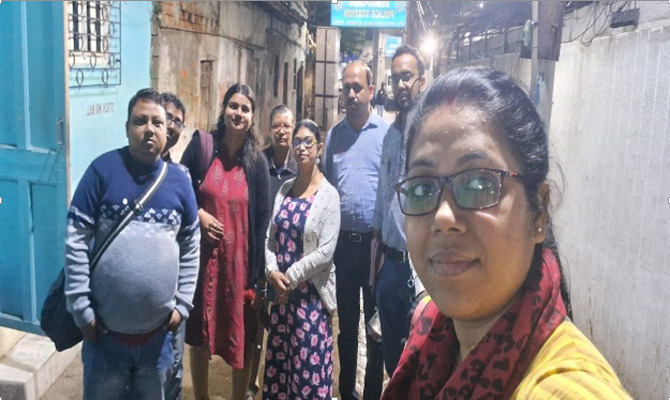
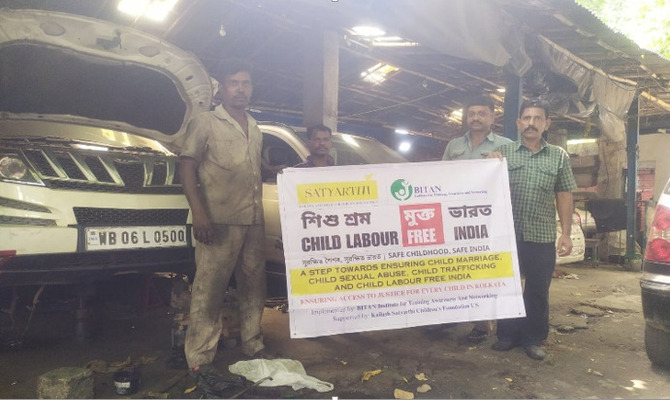
January Action Month –
- “Lets March to School“ – Through this campaign we have identified children who have been dropped out from schools, after regular counselling of those children and networking with school authorities we have re-enrolled above 30 no. children.
- Linkages with Govt. schemes - BITAN organised several camps in various slums to identify vulnerable families from different communities. With the help of these collected datas those families have been linkage with different govt. schemes like Kanyashree, Laxmi Vandar, Widow Pension etc
February Action Month –
- BITAN has been participate in Formation of Ward Level Child Committee Meeting (WLCPC) organised by District Child Protection Unit Kolkata and South 24 pgs.
- Wall painting was done in different communities with the motto of “CHILD MARRIAGE FREE INDIA”
- Networking and advocacy have been made with different govt. stakeholders and collected pledges from Borough Chairmans, Ward counsellors of Kolkata Municipal Corporation and Budge Budge Municipality.
March Action Month –
- International Women’s Day celebration in different areas of Kolkata and Naya Basti area through awareness, community meetings etc.
Campaign Background
Child marriage is not just an age-old social evil, but also a heinous crime that robs children of their childhood. Child marriage is a “crime against children” that violates basic human rights, minor girls are forced to marry and live a life of mental trauma, physical and biological stress, domestic violence including limited access to education and increased vulnerability to domestic violence. The consequences of child marriage are severe and extensive. Some of the specific consequences include: early pregnancies leading to complications and higher rate of maternal mortality and death of infants, malnutrition among both the infant and the mother, increased vulnerability to reproductive health, disruption in girl’s education and thereby reduction in opportunities of her personal and professional development, domestic violence and abuse, limited decision making powers in the household, and mental health issues.
India’s Census 2011 revealed 12 million children were married before attaining the legal age, of which 5.2 million were girls. Globally, child marriage is identified as a crime and a menace that needs to be eliminated. It finds space in the UN Sustainable Development Goals, under target 5.3 of Goal 5 that states elimination of all harmful practices, such as child, early and forced marriage and female genital mutilation by 2025.
The latest National Family Health Survey (2019-21) shows that although there is a drop in the overall rate of child marriages, from 26.8% in the National Family Health Survey (NFHS 4) to 23.3% in NFHS-5, it is still high despite laws, programmes and schemes in place to address the issue.
Child Marriage Free India Campaign
Understanding the seriousness of the issue, the Hon’ble Supreme Court of India in W.P. Civil 382 of 2013 pronounced that the sexual intercourse committed by the husband upon his wife being under the age of 18 years with or without her consent can be constituted as rape. To address this, the most definitive and audacious commitment to end child marriage was made with the launch of Child Marriage Free India campaign.
Child Marriage Free India (CMFI) is a nationwide campaign led by women leaders and a coalition of more than 160 NGOs spanning more than 300 districts working to eliminate child marriage in India. CMFI is working to attain the tipping point of child marriage, after which the society does not accept this evil practice and that will happen when the prevalence of child marriage is brought down to 5.5% by 2030, from the current national prevalence rate of 23.3%. This is being done by initially targeting 257 high-prevalence districts and gradually focusing on all the districts of the country.
Child marriage results in child rape, resulting in child pregnancy, and in a large number of cases, may lead to child deaths. For decades, we have been losing generations of our children to child marriage. The Child Marriage Free India campaign has received extended support from various Departments and Institutions of over 28 States. So far, across India more than 5 crore people have taken the pledge to end child marriage over the last one year through the efforts of the Child Marriage Free India Campaign.
Know more visit Child Marriage Free India (CMFI) Campaign
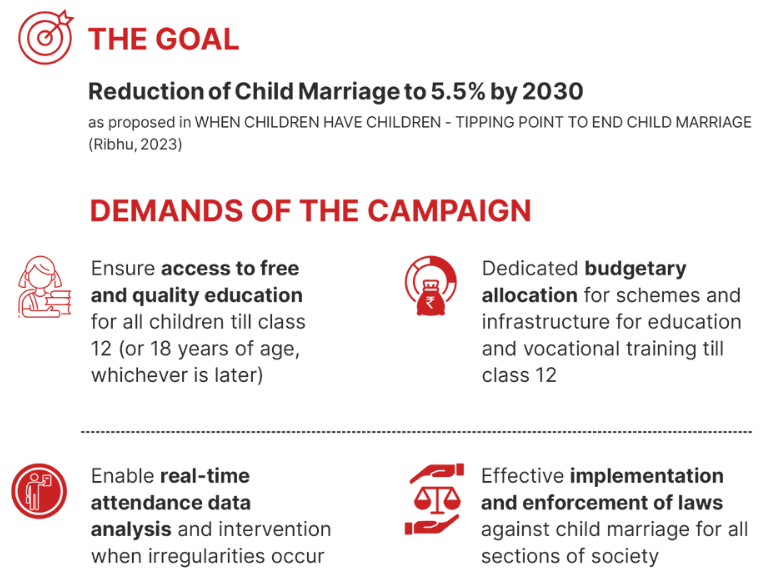
Tipping Point To End Child Marriage
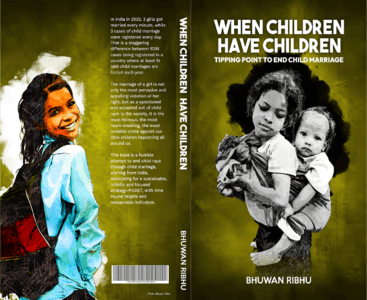
Noted child rights activist, author, Supreme Court lawyer and founder of CMFI campaign, Bhuwan Ribhu has authored a book – ‘When Children Have Children: Tipping Point to End Child Marriage’ and put forth a framework advocating a sustainable, holistic and focused strategy with time-bound targets and measurable indicators to make India child marriage free by 2030. This book shows the path to eliminating child marriage in India within the next decade. As suggested by the author in the book, by adopting a systematic, highly focused, and intensive intervention model, over a phased timeline it is possible to reduce the national child marriage prevalence levels to 5.5% —the threshold, the tipping point, beyond which the prevalence is anticipated to diminish organically with reduced reliance on targeted interventions.
Tipping Point Methodology
The aim of reduction of 60% of child marriage (in each of the phases) is assumed to bring down the incidence of child marriage to 5.5% in the next 9 nine years from 2021, from the last available estimates i.e., NFHS-5, till 2030. An additional assumption is that such a focused and elaborate intervention against child marriage would have a ripple effect. The tipping point analysis has been divided into two phases. The first phase will extend over a period of six years, starting in 2021. Subsequently, the second phase will span over a three-year period. It is expected that the national average for child marriage prevalence (percentage women aged 20-24 who were married before 18 years) would decline from 23.3% to 13.7% if the prevalence of child marriage is reduced by 60% in the 257 high-prevalence districts in the first phase followed by a further reduction of 60% in all districts across the country.
In order to reach the Tipping Point, the author has proposed a strategy at national and district level.
- National Level strategy where Governments, Institutions, statutory bodies, etc. work towards prevention, protection, increased investment, improved prosecution, convergence and use of technology for monitoring
- District Level strategy is similar to national level strategy but includes district administration, Panchayats, civil society, NGOs, other functionaries, parents and children who work collectively to prevent, report, and take action against child marriage
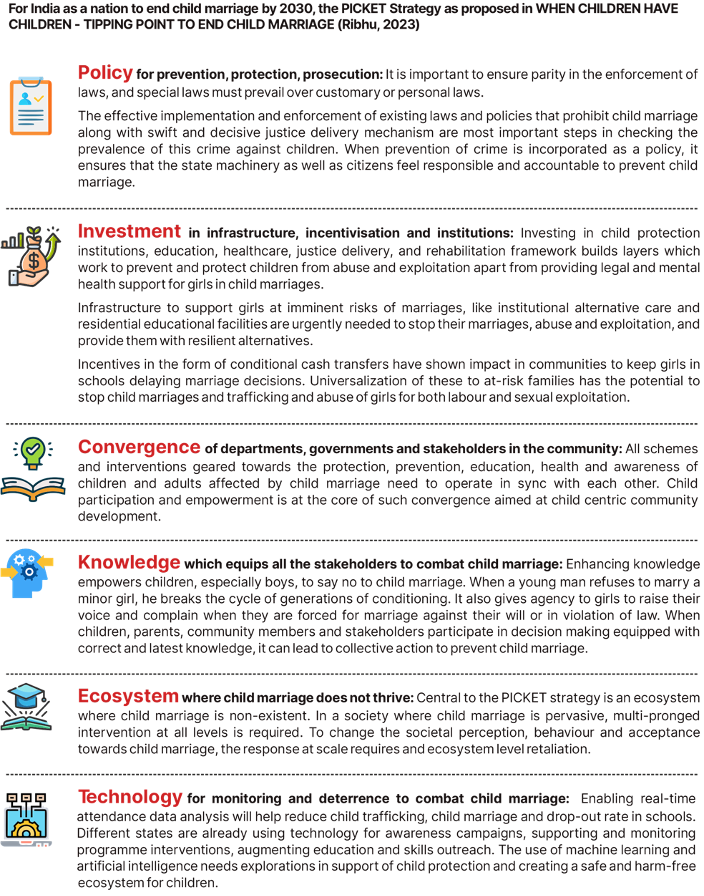
Elopement: Result of Another Forced Child Marriage
Each case we have encountered so far is different from one another. This is not just a case but a learning process for us. Here, Ms. Durga Das (name changed, 15 years) tried to elope because her parents had fixed her marriage.
The family, neighbors, friends, the village and the society – all play a very important role in one child’s holistic growth and development – physical to psychological. But that day, in Chhayari village of district Bankura, when a father was trying to marry off his daughter who has not reached the legal age of marriage, every piece in the child’s surrounding perhaps connived to make that happen. Luckily for us, our ground staff, the community social worker (Role CSW) received this information during her field visit and reported it back with the necessary details; like the contact number of her father.
Could it be just one person’s job to prevent or prohibit? In this case, as we later came to know, Durga eloped because her family did not leave any choice for her. Her sister Lakshmi (name changed), who is just a year elder, was married before turning 18. She had seen Lakshmi suffer and return to her parents, unhappy.
When we tried to speak to the father over the phone he denied the information and disconnected it. A few minutes later we received a call from the local political leader. He wanted to know the source of our information and started threatening us with dire consequences, if we pursued the case.
Then we approached the BDO and the police of Taldangra (Block), Bankura. The Police facilitated a visit to Durga’s house. Our team took a detailed note about the family and their living conditions. We started counseling – on the child’s development, the associated risks in early conjugal behavior, the possible legal actions that are related to such early marriage, and the like. They were also told that they would be held responsible, if Durga eloped to avoid this marriage. Our team also sent across a message to Durga and asked her to come back home – we assured her that her family has been apprised and they would not force her any more.
Sometime later, we could finally meet Durga physically at her father’s house and had a conversation in private regarding everything about her present situation. Why did she elope? With whom? Durga confessed that her elder sister was married off without her consent. Lakshmi’s in-laws, as she learnt from later, were not good to her. Durga did not want to experience the same fate. So, she eloped with the boy she knew as her friend.
Both the sisters had dropped out of school at an early age and their family planned the marriage to lessen the burden of feeding them. Their father had five daughters and did not have a stable income. They did not have a pucca house to live in. We tried to draw their attention on continuing education and pick up a skill which can help them to contribute to their family income. So, once the official procedures were complete, we connected them with the local High school and helped their re-admission.
This incident had far reaching effects in the villages around. Villagers requested us to run an awareness campaign for the other adolescent girls and boys. Today, Durga and Lakshmi are going to the school and the school administration is careful enough to let them enjoy their privacy with dignity.


